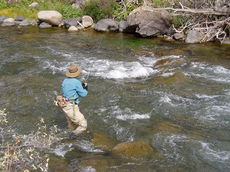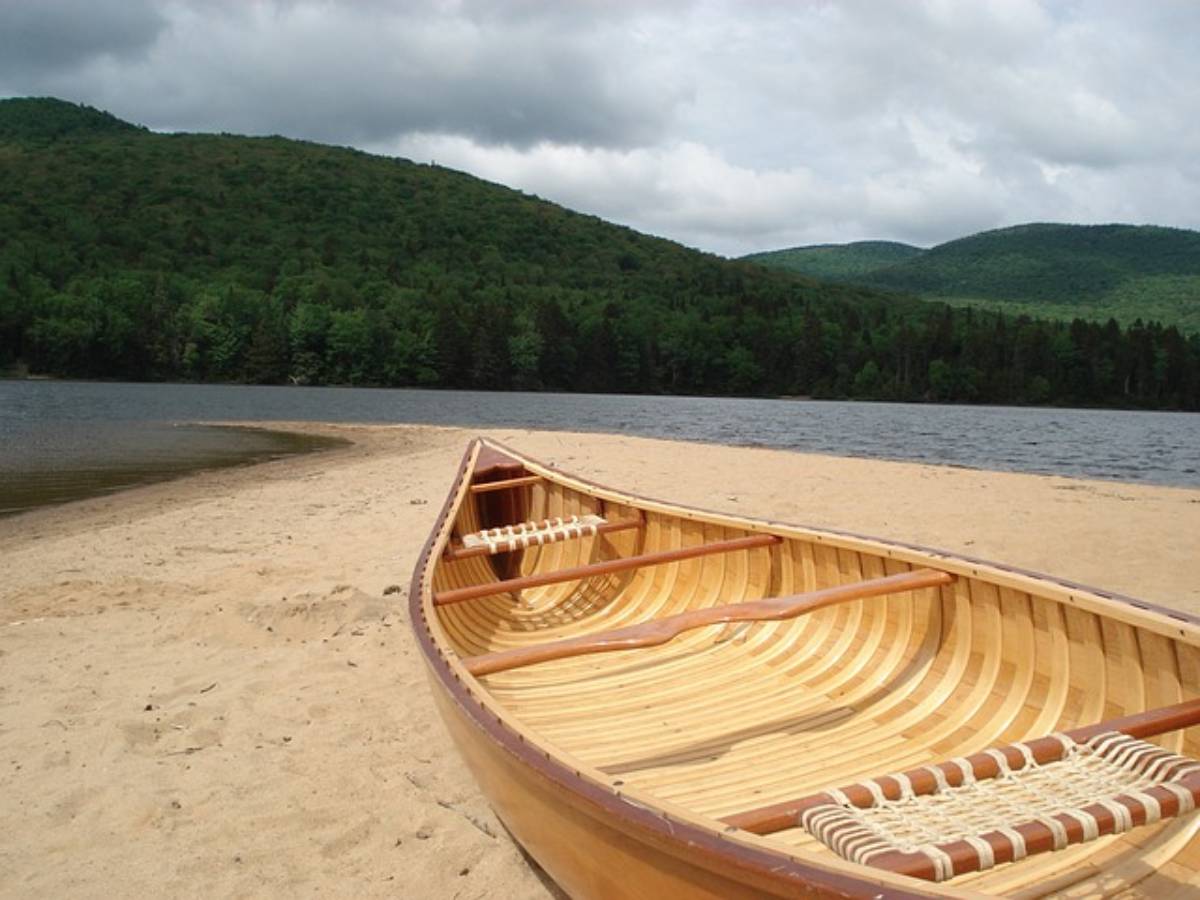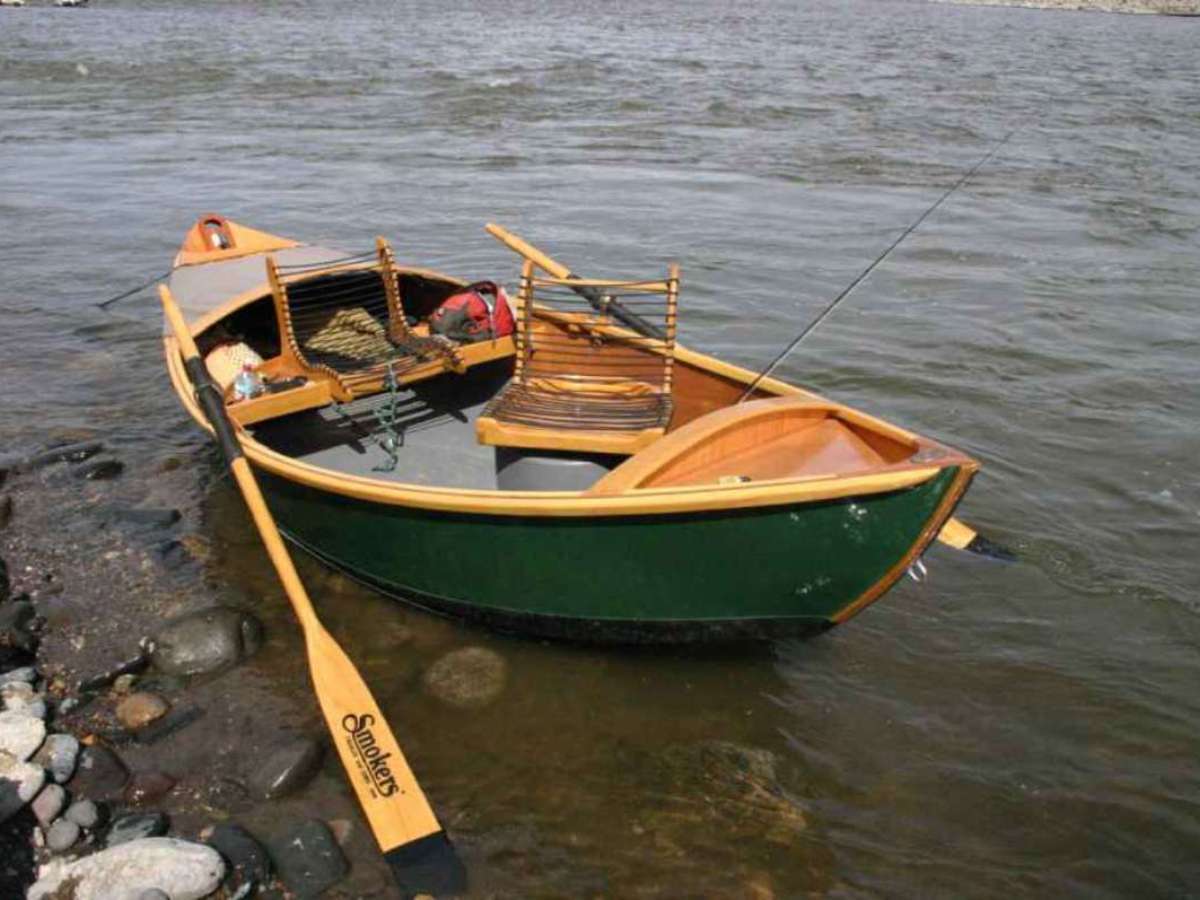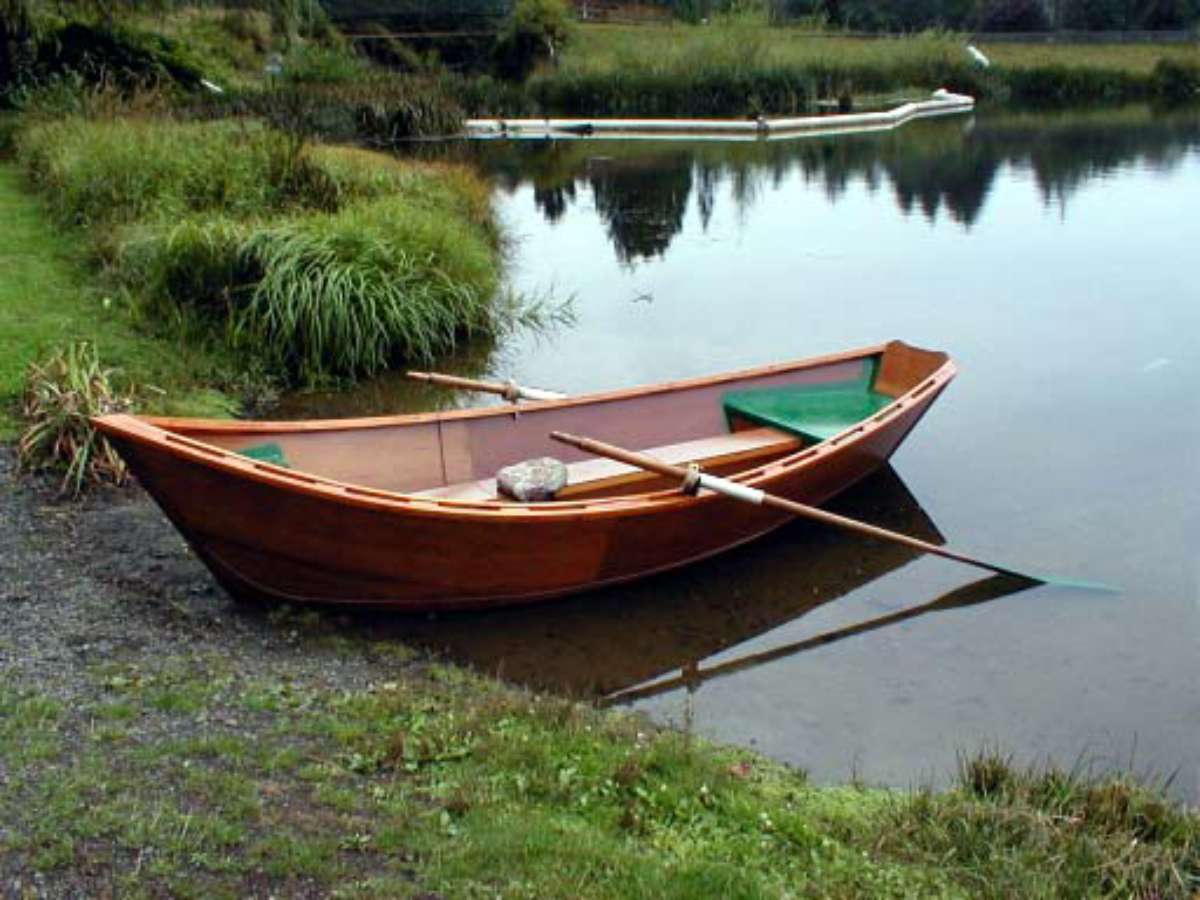 You’re standing in the current of a fast moving stream, the sun reflecting off the water. It’s a great day to be out on the water.
You’re standing in the current of a fast moving stream, the sun reflecting off the water. It’s a great day to be out on the water.
As you cast your fly into an eddy, a fish strikes. When this happens, you need to know how to play, then land, and finally release your catch.
Always have a plan for playing and landing your catch.
How are you going to play your catch?
Where will it seek safety once it realizes it is hooked?
Assess the current and determine the direction that you wish to set your hook. This will allow you to control the direction that the fish takes.
Be sure to use your arm as an extension of your fly rod. The tip of the rod should be kept high. If you hold your arm above your head, it will add absorption of the shock. This prevents your leader and line from snags and obstacles under the water surface.
To play large fish, be assertive. When they get close to shore, use side pressure. However, when the fish surges, it is best to hold the tip of your fly rod high.
Tippets can break easily if you set the hook too hard. Do not adjust drag while playing a fish unless you are an experienced fly fishing angler.
When you have the fish played-out and its head is out of the water, bring the fish toward you and raise the rod. Slide your hand down the leader and remove the fly, releasing the fish. Try not to handle the fish unless absolutely necessary. Use needle-nose pliers if the fly doesn’t shake loose easily. If you must, use a net to control the fish and gently release it back into the water once the fly has been removed.
If the water where you are fishing is 70 degrees Fahrenheit or more, it is essential that you play, land and remove the fish quickly in order for it to survive.
Check your fly often, especially on a windy day. The fly and tippet can become tangled or knotted. This can only be determined by checking your bait.
Be conservation-wise. Do not keep fish unless you are going to eat them. Instead, practice catch and release to ensure future generations will enjoy the thrill of fly fishing.



